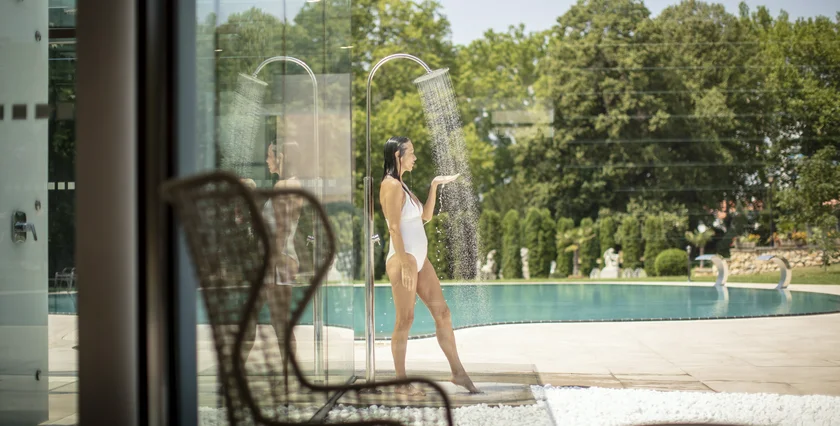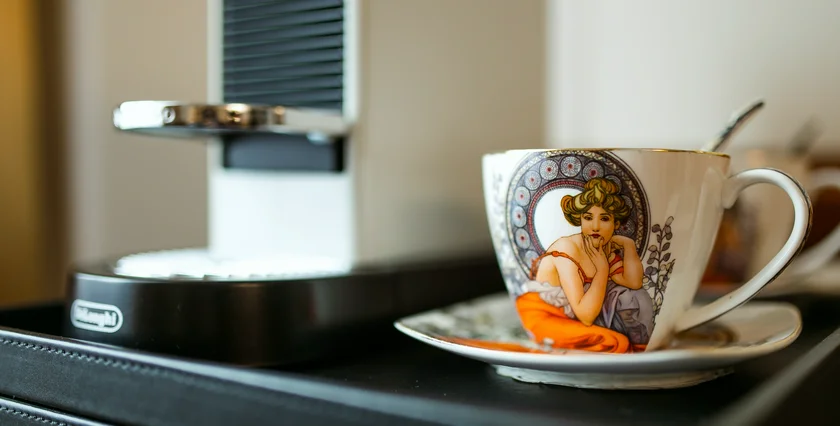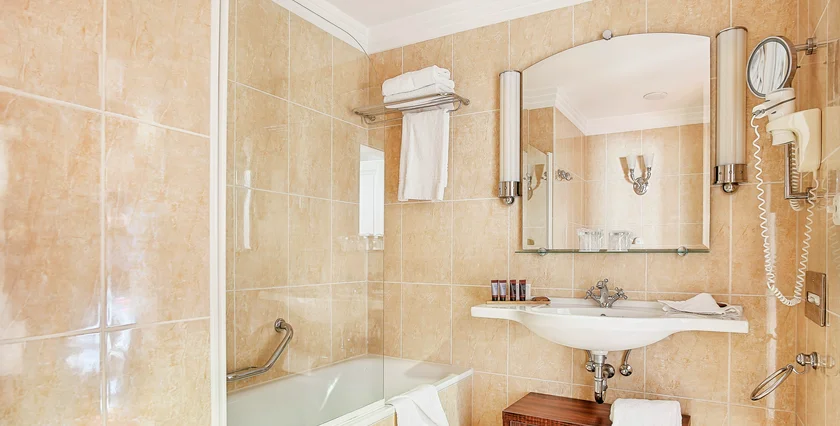Wrapped in a rich cultural history and surrounded by breathtaking vistas, extensive cycle paths and storybook architecture, Piešťany has been a favorite holiday destination along Slovakia’s gleaming spa circuit for centuries.
Situated 80 km from Bratislava in the lush Váh River valley, the town truly dazzles in the summer, from its stunning panoramas, hiking trails and historic landmarks to thrilling water sports and wildly popular music festivals.
The prime attractions, however, are its famous medicinal thermal waters – and unique sulfur mud. Renowned for their healing effects, particularly in regard to lingering rheumatic and arthritic diseases, the Piešťany hot springs will rejuvenate your mind, body and soul.
Take a dip at the Napoleon Health Spa, a U-shaped complex of buildings that sits directly over the town’s 10 hot springs, or enjoy a swim in the 50-meter Eva thermal swimming pool on Spa Island, which connects to Piešťany via the functionalist Colonnade Bridge, one of the longest covered bridges in Slovakia.
At the heart of the town’s enduring spa culture is Thermia Palace, a five-star property that is part of Ensana Hotels’ exclusive spa network and one of the best spots in town to pamper yourself.
The art nouveau hotel is connected to the Irma Spa House, which is built directly above the Piešťany hot springs, whose thermal waters bubble up from 2,000 meters below ground.
You can choose from more than 60 different treatments, including mud wraps, thermal baths, bubble baths, underwater massages and other treatments recommended by the onsite physician.
Over the years, Thermia Palace has welcomed its fair share of notable guests, including nobility, politicians, artists, writers and actors.
Alfons Mucha, a frequent spa visitor, left an indelible mark here. The celebrated Czech art nouveau master is said to have created many sketches for his historic “Slavic Epic” during his long stays with his young daughter.
As part of the Mucha Trail, Piešťany is once again hosting an exhibition of Mucha’s work. Mucha and Photography: a Personal Vision, featuring 120 photographic works by Mucha as well as posters, drawings, sketches and sculptures, can be viewed at the exhibition hall in the Napoleon II building on Spa Island through Oct. 31. Thermia Palace guests will be able to enter the exhibition free of charge.
Moving beyond Spa Island, there’s a lot to explore. A medieval monastery and a small mammoth ivory statue known as the Moravian Venus, which was unearthed near the neighboring village of Moravany nad Váhom and dates back to 22,800 BC, are worth checking out.
For cycle enthusiasts, there are quite a few paths to explore in and around Piešťany, with the town itself located along the well-traveled Vážska cyklomagistrála cycling route. For adrenaline junkies, the Váh rafting season is not to be missed! You can also enjoy a boat cruise on the river or head over to the Sĺňava Reservoir for a bit of windsurfing, water skiing, canoeing, sail-boating, or fishing.
Are you ready to book your stay? Let’s take a closer look at one of Spa Island’s most celebrated hotels.
Thermia Palace Ensana Health Spa Hotel
Built between 1909 and 1912, the three-winged Thermia Palace’s spectacularly designed facade resembles an open book. Covered from top to bottom in nuanced detail, the 118-room, 15-suite property – the first five-star hotel to open in Slovakia – features an impressive staircase and lovely stained glass windows as well as numerous statues of ancient deities in the well-manicured garden.
The hotel’s luxurious Irma Spa House offers guests 60 different kinds of treatments that can be supplemented by various wellness and beauty procedures.
In addition to its balneotherapy and physiotherapy programs, the spa house’s therapeutic mud treatments are also very popular. A great remedy for musculoskeletal disorders and skin diseases, healing mud is mineral-rich, benefiting a full range of illnesses, including gynecological conditions.
Cafe Alexander serves fine coffee specialties, delicious desserts and piano music in the evenings, which you can enjoy with a glass of wine. The Pool Bar offers a more laid-back, casual atmosphere, while the Grand Restaurant, an architectural highlight of the hotel, provides full menus for breakfast, lunch and dinner.
The Grand Restaurant displays an original Mucha artwork, initially unveiled in 1932. His daughter Jaroslava, a spa patient, was thought to have been his model for the customized work, titled “Hail, Blessed Fountain of Health,” which he gifted to the hotel in appreciation for the girl’s treatment and recovery.
The painting was stolen in 2000, with the thieves cutting it from its canvas before escaping through a window and across the hotel’s garden. It was found four years later, thoroughly restored, and put back on display in 2006. The thief was never caught.












 Reading time: 4 minutes
Reading time: 4 minutes 









































